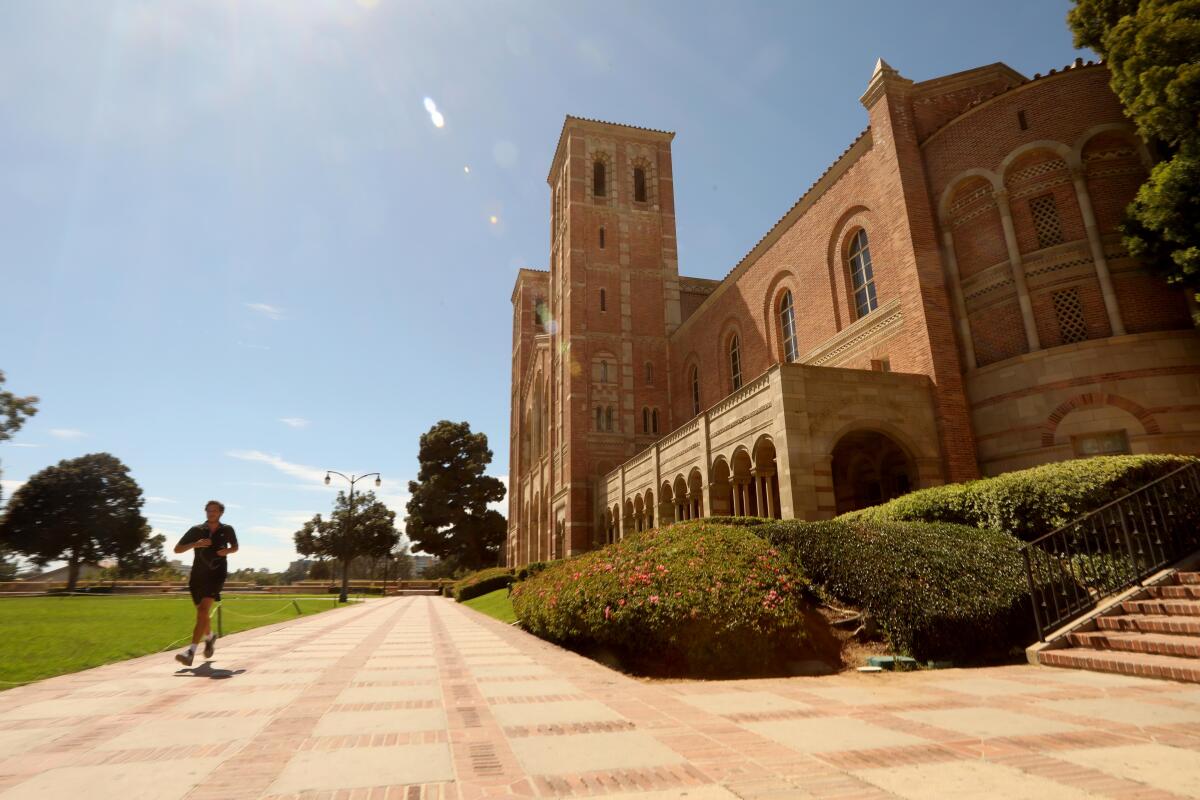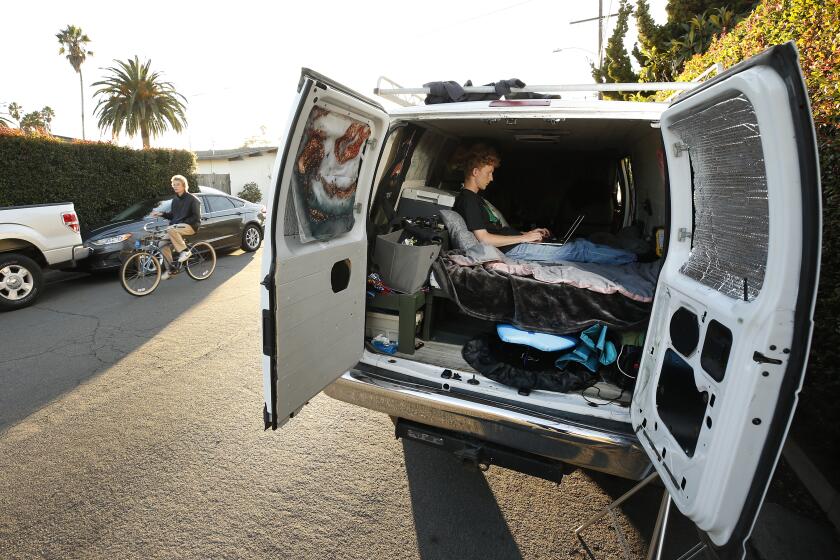Too many qualified students are shut out of UC, CSU. A new study offers some solutions

- Share via
If it seems harder than ever to get into the University of California and California State University — it is.
Nearly half of California high school graduates now qualify for admission to the state’s two public university systems — up from one-third in 2008. The share of them who apply to UC has grown from 17% in 2001 to 25% in 2020; for Cal State, the numbers went from 27% to 36% during that same period. But with limited seats, admission bars are rising: The average high school GPA of admitted UC students is now over 4.0 at most campuses, and 16 of 23 Cal State campuses have more applicants than seats for some or all of their majors.
As a result, tens of thousands of eligible students are being shut out — and the state can no longer meet its California promise of a UC and Cal State education for them.
The Campaign for College Opportunity released the latest data on the issue Wednesday, calling for swift action and innovative new approaches to address the crunch. The recommendations include a reset of the state’s 1960 higher education blueprint to increase enrollment by potentially 44,000 students, with a statewide goal to equip 60% of Californians with a degree or certificate.
The report also calls for more state funding to support increased enrollment and proposes such new approaches as financial incentives to attract students to less popular campuses and the creation of UC and Cal State branches at underused community colleges.
A space crunch is projected to intensify in coming years just as the need for highly skilled workers in California grows.
“Our state is in dire need of a new roadmap that provides greater access to [UC and CSU], intentionally closes the racial/ethnic gaps that persist in access and success in higher education, and ensures every Californian regardless of race/ethnicity, zip code, or income is given a true equitable opportunity to go to college and graduate with a degree,” the report said. “This is critical to California remaining the economic powerhouse that it is and maintaining its standing as the fifth largest economy in the world.”
The report amplifies the growing clamor to address the capacity crunch at UC and Cal State — a goal also embraced by system leaders and state legislators. University of California President Michael V. Drake and Board of Regents Chair Cecilia Estolano have made expanding capacity a top priority and system leaders are crafting a plan to enroll at least 20,000 more students by 2030. In remarks this month, Drake said he “fully expects” to exceed that goal with more technology, online learning and educational partnerships.
In addition, Drake said, some of UC’s nine undergraduate campuses are gearing up for significant growth. While UC Berkeley, UCLA and UC Santa Cruz are particularly limited by physical space constraints, UC Merced plans to add more than 5,000 students by 2030. UC Riverside Chancellor Kim Wilcox also wants robust growth for his Inland Empire campus — from 26,000 today to at least 40,000 in coming years.
“We’ll grow as fast as resources allow us to grow,” Wilcox said at a Board of Regents meeting in October.
California’s student-housing crisis has forced hundreds of UC students to live in hotel rooms and vehicles. But campus building efforts have sparked litigation and outcry at campuses, including UC Santa Barbara.
State lawmakers have pledged funding to add 6,200 more UC seats for fall 2022 and to reduce nonresident students at the system’s most competitive campuses — UCLA, UC Berkeley and UC San Diego — over five years to make room for 4,500 more Californians.
The Cal State system has not set out long-range enrollment goals. But campuses plan to add more than 9,400 California resident students in 2022-23 under state funding pledges, said spokeswoman Toni Molle.
Michele Siqueiros, the Campaign for College Opportunity’s president, said both systems are working hard to accommodate the crush of qualified students aiming for a UC or Cal State seat. But more far-reaching action is needed, she said.
“It should not be harder for students today to get into our universities than it was for those of us who were fortunate enough to go 20 years ago,” she said. “There’s an opportunity right now to be thoughtful about how we can expand access, knowing that more students are preparing for college and are doing what we tell them they should do. We should give them a real opportunity to be in college and succeed.”
The report’s recommendations include:
- Revise the state’s higher education blueprint, known as the Master Plan, to expand eligibility for UC from the top 12.5% of high school students to the top 15% and for Cal State, from 33% to 40%. That change would allow 44,000 more students to qualify for the two systems. More state funding would be needed to secure a place for them, the report said, along with potential new approaches such as branch campuses and financial incentives for students to attend less crowded campuses, such as UC Merced and Cal State campuses at Humboldt, Sonoma and San Francisco.
- Create a statewide body to coordinate efforts among California higher education segments to collect data and provide oversight to help equip at least 60% of Californians with a degree or certificate. As of 2018, about 48% of Californians had those credentials. To help meet that goal, the state could expand the limited authority granted to 15 community colleges to award baccalaureate degrees, the report said. It also proposes a five-year plan to increase enrollment and close racial and ethnic access and achievement gaps.
- Drop the use of the SAT and ACT for admissions decisions. UC already has done so. Cal State has suspended use of standardized test scores for admissions decisions for the 2022-23 school year but is continuing to study its policy options after that.
“California students deserve equitable access to our public universities,” the report said. “Increased competition in admissions to our campuses is not just a disservice to talented students striving to realize their potential, it is harmful to our economic future and it is an unfair burden for this current generation.”
More to Read
Sign up for Essential California
The most important California stories and recommendations in your inbox every morning.
You may occasionally receive promotional content from the Los Angeles Times.













